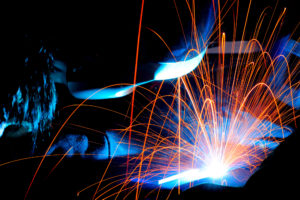Stainless steel offers a number of benefits over traditional steel.
These include being non-corrosive, strong and very workable. However, welding stainless steel is a bit more complicated than welding traditional carbon steel.
Types of Stainless Steel

Not all stainless steel is created alike. There are five types of stainless steel. Knowing the type of stainless you are dealing with is essential to a satisfactory welding process. The five types include austenitic, the most commonly-used type of stainless steel; martensitic, used in high-wear applications; ferritic, an affordable alternative to austenitic, often used for automotive parts; duplex, a combination of austenitic and ferritic stainless steel; and precipitation-hardening stainless, a stainless that is made using other alloys to increase its strength (and also cost). This last type of stainless is often used in the aerospace industry.
Steps for Welding Stainless Steel
1. Clean the surface well. The first step in welding any type of stainless is to clean the surface that is to be welded well. Any dirt or debris can cause the weld not to adhere.
2. Have the proper filler material on hand. The filler should be the same material as the two pieces being welded.
Austenitic and ferritic— The thing to be careful in welding these types of stainless is not heating the steel too much. These types of stainless should be allowed to cool when they reach 350 degrees Fahrenheit.
Martensitic — This type of stainless needs to be preheated to a temperature of between 400 and 600 degrees Fahrenheit before welding can begin, and it should not be allowed to drop below this temperature range until the weld is completed.
To learn more about welding stainless steel and other metals, contact us. We’ve been helping east coast businesses and homeowners with their welding needs since 1976.
